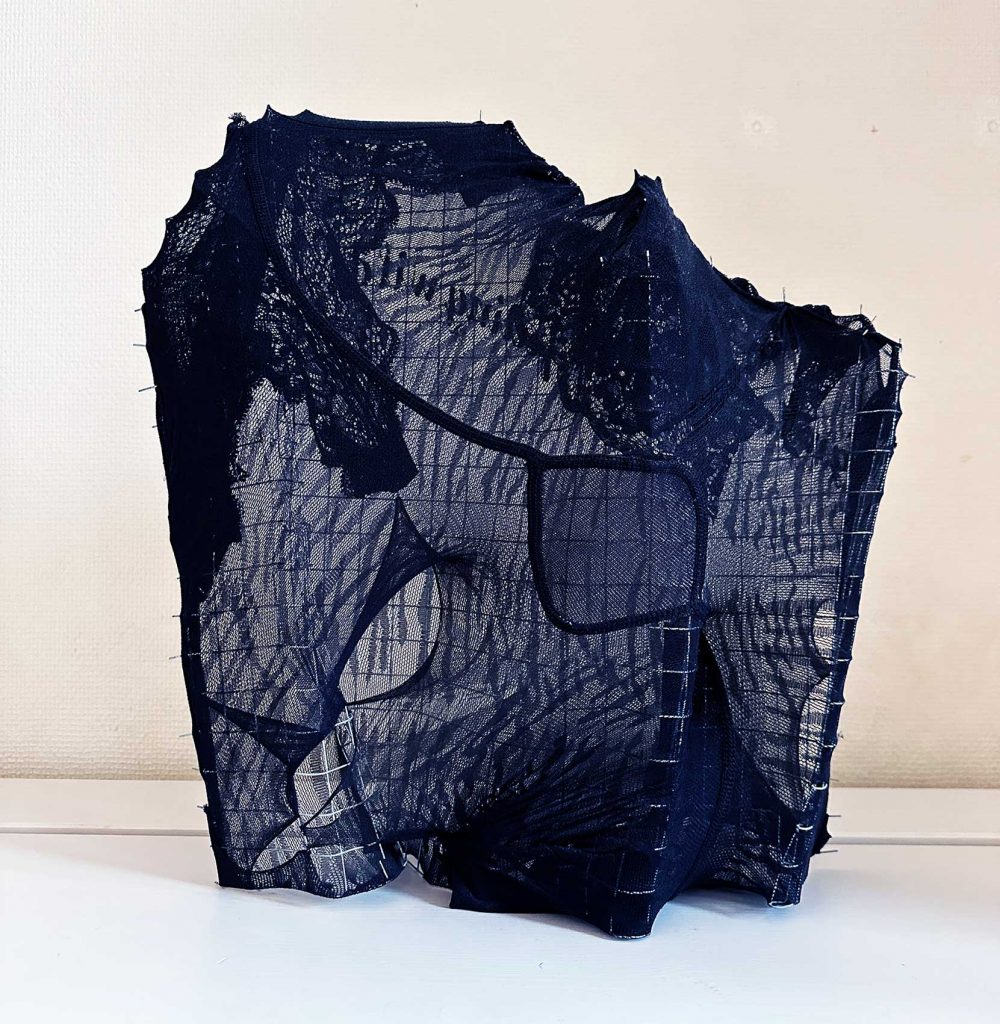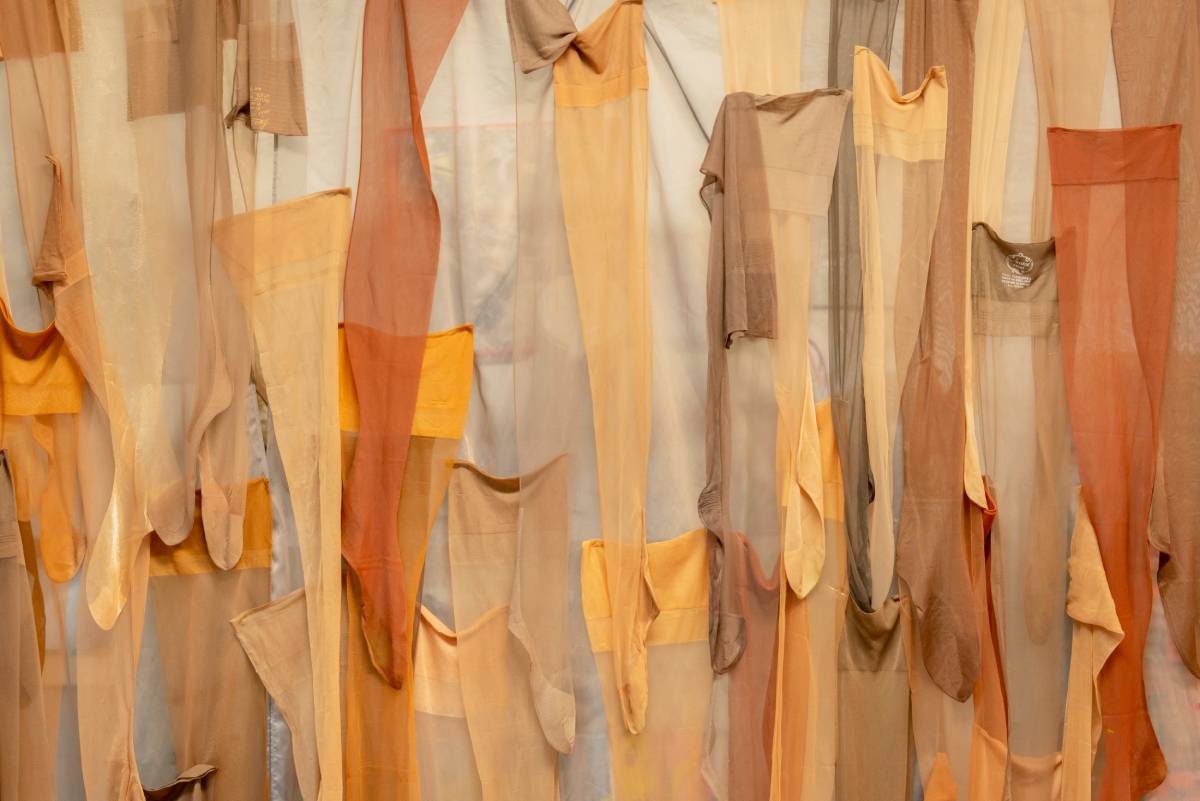Reclaiming & Recycling: The Feminine Struggle Between Worlds
In L. Christeseva’s works, stockings—once symbols of femininity and social decorum—become sites of struggle when stretched against metal wire, revealing the tension between restriction and liberation. As Simone de Beauvoir argued in The Second Sex, women’s bodies have long been shaped by societal expectations, confined within roles that dictate their movement, appearance, and worth. The juxtaposition of fragile textiles and rigid industrial structures in this installation mirrors the broader feminist discourse on reclaiming spaces traditionally designed to contain women. The artwork transforms the stocking from an object of passive adornment into an active site of resistance, capturing the fragility and strength of those navigating between patriarchal traditions and feminist reinvention.
The net, reminiscent of both domestic enclosures and political borders, highlights the experience of women in transition—those who, like migrants, move between ideologies, geographies, and histories. Drawing from bell hooks’ reflections on marginality as a space of both oppression and possibility, the installation explores how cultural dislocation reshapes identity. A stocking from Belarus might still be “in style” in feminist Sweden, but does it carry the same meaning? The artwork questions whether feminist ideals can be universal, or if they must always be renegotiated in different cultural and political landscapes.
Inspired by Judith Butler’s theory of performativity, L. Christeseva ultimately asks: can femininity be recycled without reinforcing its past constraints? The tension in the stretched fabric, the potential of it to snap, reveals the precarious balance between inherited narratives and new possibilities. The moment when softness meets steel—when two worlds, once meant to remain separate, are forced into confrontation—becomes an invitation to imagine new ways of being. In reclaiming and recycling these materials, we expose the possibility of transformation: what was once an instrument of conformity becomes a declaration of change.

For Christeseva, this project also echoes a personal reclamation of femininity. Reflecting on Simone de Beauvoir’s enduring question from The Second Sex, “What makes a woman a woman?” the artist uses the act of baking to confront and reinterpret notions of femininity beyond stereotypes. This question—posed by de Beauvoir in her exploration of woman as “Other” in 1949—asks us to consider how womanhood can be both a personal and collective identity, shaped by traditions yet continually redefined.
Engaging with feminist values in Sweden, Christeseva finds empowerment in community rituals that blend strength and softness, heritage and progress. Through baking, storytelling, and shared recipes, this cross-cultural project answers de Beauvoir’s question in a way that transcends borders: femininity, as expressed here, is woven from resilience, shared memory, and the powerful unity of women who, despite displacement, reclaim their identities. This blend of cultures shapes a unique expression of womanhood, bringing the values of tradition and modernity into harmony within both local and global narratives.

